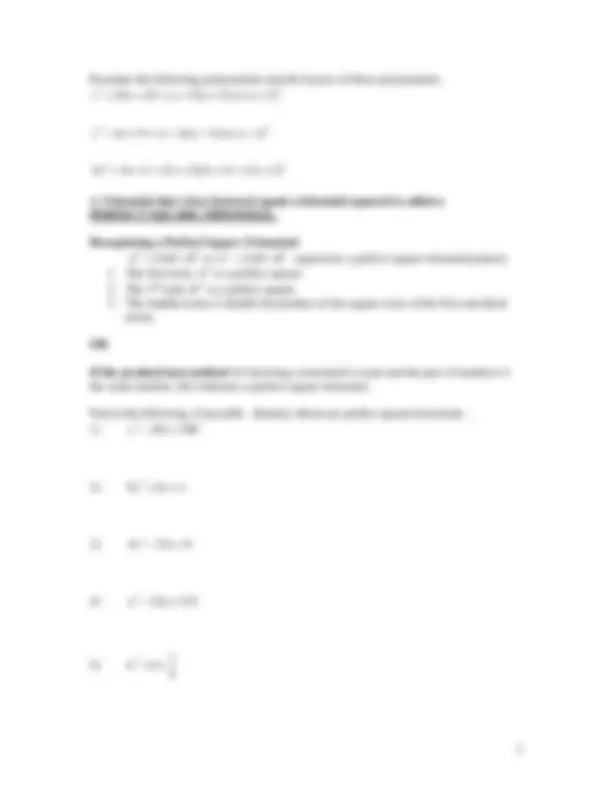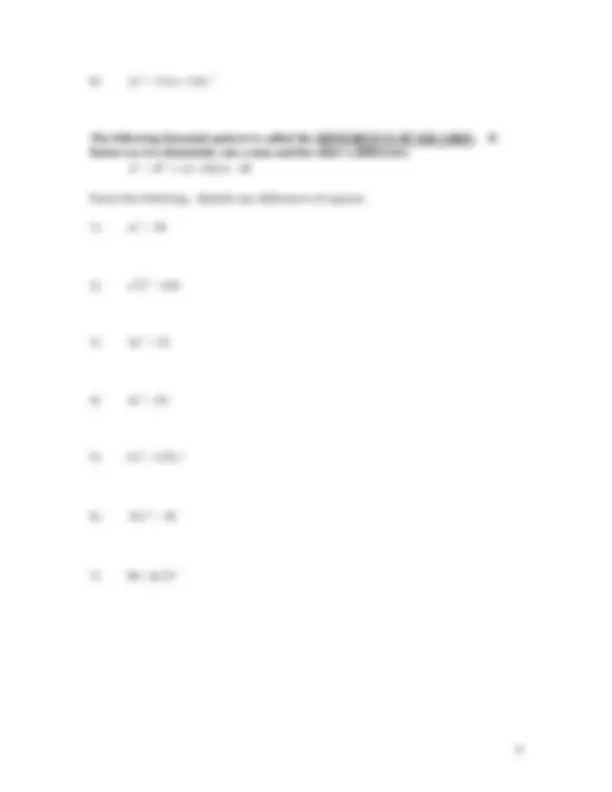




Study with the several resources on Docsity

Earn points by helping other students or get them with a premium plan


Prepare for your exams
Study with the several resources on Docsity

Earn points to download
Earn points by helping other students or get them with a premium plan
Community
Ask the community for help and clear up your study doubts
Discover the best universities in your country according to Docsity users
Free resources
Download our free guides on studying techniques, anxiety management strategies, and thesis advice from Docsity tutors
A detailed explanation of factoring trinomials, perfect square trinomials, and difference of squares. It covers two methods for factoring trinomials: the trial-and-error method and the grouping method. The document also includes examples of factoring various trinomials and identifying perfect square trinomials and differences of squares.
What you will learn
Typology: Slides
1 / 4

This page cannot be seen from the preview
Don't miss anything!



Lessons 27 Factoring Trinomials, Perfect Square Trinomials, Difference of Squares
TRINOMIALS (leading coefficient not a 1)
Form: ax^2 + bx + c Always write terms in descending order!
Notice: ( 3 x − 5 )( 2 x + 3 )= 6 x^2 + 9 x − 10 x − 15 = 6 x^2 − x − 15
6 x^2 is the product of the first two terms, -15 is the product of the last two terms,
There are two methods that can be used to factor trinomials of the form ,
ax^2 + bx + c. The first method is a ‘trial-and-error’ process or ‘reversing FOIL’. The second method is called the ‘Grouping Method’ or Product/Sum Method. I will show both methods and you may choose which method works for you. I recommend the Grouping Method.
Trial-and-Error Method:
Grouping Method (Product/Sum Method) Follow these steps:
Factor:
6 x^2 − 5 x − 25
9 a^2 + 18 a + 8
The following binomial pattern is called the DIFFERENCE OF SQUARES. It factors as two binomials; one a sum and the other a difference.
A^2 − B^2 =( A + B )( A − B )
Factor the following. Identify any differences of squares.
m^2 − 36
a^2 b^2 − 144
2 n^2 − 32
4 x^2 − 9 x
5 x^8 − 125 y^4
25 y^6 − 36
98 − 8 a^4 b^2